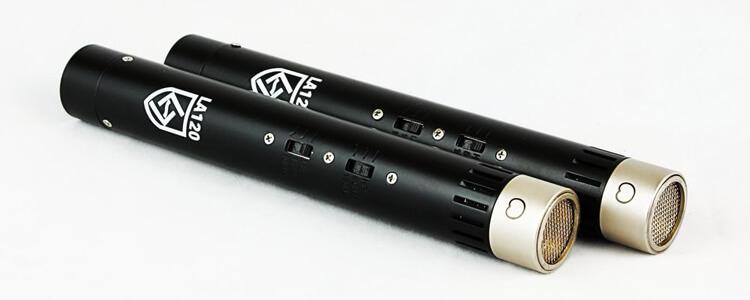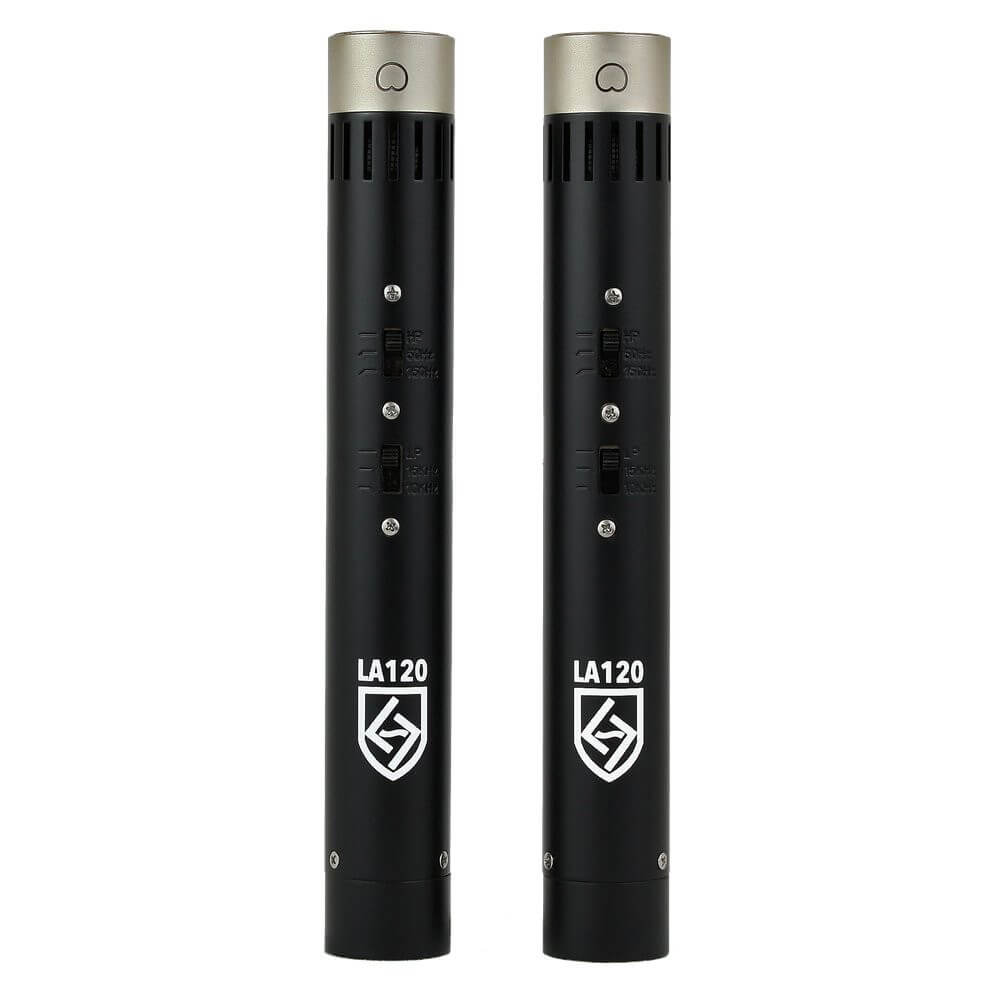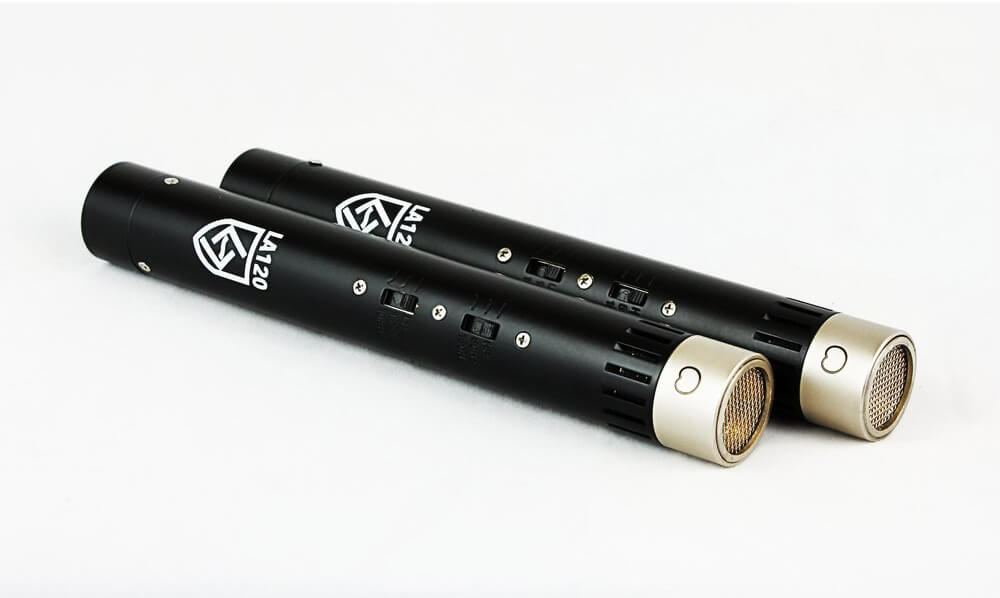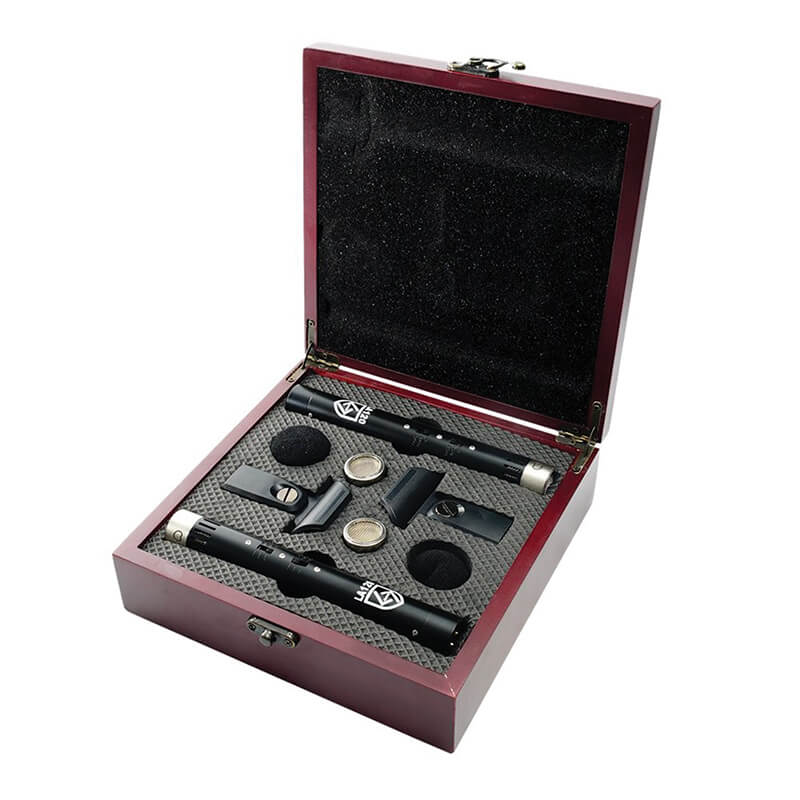Lauten Audio LA-120 Review – Impressive and Versatile
Lauten Audio has filled out the Series Black range with a pair of small-diaphragm condensers. Mike Hillier is impressed… Price £319 pair | £74 10dB Attenuators Contact Synthax Audio | 0127 821870 LA-120 key features: Small diaphragm condenser microphone Swappable cardioid and omni capsules JFET balanced output Frequency Range: 20Hz-20kHz Selectable 50Hz and 150Hz high-pass […]

Lauten Audio has filled out the Series Black range with a pair of small-diaphragm condensers. Mike Hillier is impressed…

Price £319 pair | £74 10dB Attenuators
Contact Synthax Audio | 0127 821870
![]()
LA-120 key features:
- Small diaphragm condenser microphone
- Swappable cardioid and omni capsules
- JFET balanced output
- Frequency Range: 20Hz-20kHz
- Selectable 50Hz and 150Hz high-pass filter
- Selectable 10kHz and 15kHz low-pass filter
Lauten Audio’s Series Black range is meant to provide an affordable and versatile microphone collection. Last summer we looked at the vacuum powered LA-320 microphone, and we were impressed with the forward mid-range presence of the mic, especially on electric guitar. The LA-120s we have on review now are from the same Series Black range as the LA-320, providing a stereo pair of small-diaphragm mics to go with the large-diaphragm LA-320 and LA-220 options. The LA-120 arrives in a cute wooden box.
Inside are the two mics, a pair of cardioid capsules, a pair of omni-directional capsules, two mic clips and two foam windshields. To accompany the LA-120 mics Lauten Audio also provided us with a pair of LA-120 10dB attenuators, which are in-line pads available separately and designed to increase the max SPL of the LA-120 from 130 to 140dB SPL. The attenuators screw on to the mic body between the body and the capsule, increasing the length of the mic from 15.9cm to 18.4cm.
Small, medium or large?
The LA-120 features both a high- and low-pass filter, enabling you to produce different sounds from a single mic and focussing the frequency range on the region you want to capture. The high-pass filter has flat, 50Hz and 150Hz positions, while the low-pass has flat, 15kHz and 10kHz positions.

In spaced pair arrangement on an acoustic guitar, using the cardioid capsule the LA-120 produced a fairly flat, neutral picture of the instrument. The low-end response produces plenty of bold body in the guitar, and we were impressed with the smooth response through the mid-range and high-end, which gave the guitar a professional sheen. There is little obvious presence boost, but if you need to lift in this area the response is clean and clear and we got fantastic results pairing the LA-120s recorded through our CAPI VP-28s, with a touch of compression and high-end boost from the Tegeler Crème.
Time to leave the capsule
Switching the capsules out for the omni capsules produces a much brighter recording, with a brashness to the strings that wasn’t present with the cardioid capsule. For busier, pop arrangements this brighter sound might work, helping the acoustic guitar to cut through a dense mix. But even for this, we would probably opt for the drier cardioid capsule with a little extra boost in the top-end, in order to allow for greater dynamic control with compression. However we could see this brighter, roomier sound working on dark-sounding stringed instruments.
Small diaphragm condensers are a common choice of mic for drum overheads, but we’ve often avoided them in preference for large diaphragm condensers, or even ribbons which tend to push the cymbals and hats a little further back, which can be useful with heavy-handed drummers.
However, by including a low-pass filter alongside the more common high-pass filter, the LA-120 makes for a tempting prospect on overheads. We slung ours up against a pair of our Ear Trumpet Labs Edwinas and a pair of AKG C1000S (technically a medium-diaphragm condenser, but often used in place of a small-diaphragm condenser). With all the filters set to flat and using the cardioid capsule, the LA-120 were a huge improvement on the AKG C1000S, the mid-range is smoother, and doesn’t have the honky upper-mid that is found on the AKG.

The top-end, had a forward, modern sound, which we’re used to from small-diaphragm condensers, but compared to the (dark sounding) Edwinas still pushes the cymbals too much to the front for our tastes. Engaging the LPF at 15kHz starts to control this. The Edwinas still sound a little darker, but the air around the top is a healthy balance between the dark tone of the Edwinas and the modern sound of the flat LA-120s.
Switching the LA-120 LPF to the 10kHz position we start to lose some of the detail. The crash cymbal became choked, and the loss of shine to the cymbals means this no longer has a benefit over the Edwinas while still lacking the depth towards the bottom. The 15kHz setting was our preferred option here, and with a little EQ cut around 8kHz and a slight boost in the 250Hz range and the 2.5kHz range and we had a sound that was every bit as big and bold as the Edwinas.
Padding out
With the 10dB pad engaged on the LA-120 the mics have enough headroom to be used as close mics on louder sources, such as the snare. Fitting the pad only takes around 20 seconds, but you have to ensure that the mic is not receiving Phantom Power before starting. If you do find yourself using the LA-120 on snare – more likely in a studio environment, expect a very fast, transient rich response with plenty of crack, and more depth than many mics designed specifically for snares.
The tried and tested SM57 filters off a little of the sub-harmonics of the snare body, while emphasising the upper-mid harmonics, and it’s slightly slower response helps to slightly compress the attack. The LA-120 by comparison is a flatter and broader response, with more attack, and a more detailed decay. In solo, there is no comparison over which is the better mic, but in the mix this story changes and the SM57 edges the LA-120 out, sitting more quickly into place without as much additional processing.
The Lauten Audio Series Black range delivers pro results at affordable prices and, while they may be aimed at smaller setups, the LA-120s could easily find themselves being used in much larger studios because of their incredible versatility.
Alternatives

sE Electronics
sE5 £399 pair
The sE5 mics have a more open, enhanced top end, which will flatten some sources, while needing to be controlled more on others. However, the sE5 doesn’t have exchangeable capsules, so you’re stuck with only a cardioid pickup pattern.

Aston Microphones
Starlight £699 pair
The Aston Starlights are without doubt some of the best sounding small-diaphragm mics that we’ve heard. The ability to choose between modern, vintage or hybrid voicing goes some way to replicating the versatility of the filters on the LA-120. The laser targeting system is a nice touch too, enabling you to line it up with your preferred spot on an instrument every time.
